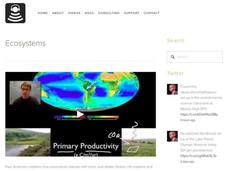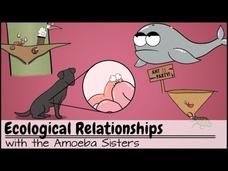TED-Ed
TED-ED: The threat of invasive species - Jennifer Klos
Massive vines that blanket the southern United States, climbing high as they uproot trees and swallow buildings. A ravenous snake that is capable of devouring an alligator. Rabbit populations that eat themselves into starvation. These...
Bozeman Science
Logistic Growth
Paul Andersen explains how populations eventually reach a carrying capacity in logistic growth. He begins with a brief discussion of population size ( N ), growth rate ( r ) and exponential growth. He then explains how density dependent...
Crash Course
Community Ecology: Feel the Love - Crash Course Ecology
Interactions between species are what define ecological communities, and community ecology studies these interactions anywhere they take place. Although interspecies interactions are mostly competitive, competition is pretty dangerous,...
Curated Video
GCSE Biology - Factors Affecting the Rate of Photosynthesis #49
The rate of photosynthesis is affected by light intensity, temperature, carbon dioxide concentrations, and chlorophyll. In this video we explore exactly how, and also how farmers can use this knowledge to increase the yields of their crops.
Professor Dave Explains
Core Principles and Concepts of Dendrochronology
Now that we know what dendrochronology is, it's time to dig into the core principles and concepts of this discipline, so that we can better understand how dendrochronologists think and what they do. Data acquisition and tree ring...
Curated Video
Understanding Communities and Succession in Ecosystems
In this video, the teacher covers key concepts related to communities in ecology. They discuss how different populations interact within a community, the role of limiting factors in population dynamics, and the importance of tolerance in...
FuseSchool
BIOLOGY - Plant Biology - Rate of Photosynthesis
hotosynthesis is a chemical reaction that is fundamental to life. In this video we are going to have a look at the factors that affect the rate of photosynthesis. There are 3 main factors: light intensity, carbon dioxide concentration...
Bozeman Science
Ecosystems
Living and non-living things are both a part of an ecosystem. A video begins with ecosystem interactions using biotic and abiotic factors. It also covers food webs, limiting factors, and logistic growth. As a real-world connection, it...
Scholastic
Study Jams! Population Growth
Along came a spider, who sat down beside her. She screamed, but RJ wouldn't smash it because spiders are a limiting factor for other insects in an ecosystem. In this video, other common limiting factors for populations are listed....
Amoeba Sisters
Ecological Relationships
What are ecological relationships? Well, it can be complicated! Paint a clear picture for pupils with a fun and informative video. It explains and illustrates each relationship thoroughly, from pesky parasites to snuggly symbiotes.
Fuse School
Moles in Equations
Moles are so important to chemistry that Michael Offutt composed an entire musical album titled Molennium about them. The video walks through how to use moles to solve a couple of different equations. It explains each step and when you...
Bozeman Science
Communities
What do you get if you cross ants with ticks? All kinds of antics! Video discusses the structure of the classifications in ecology. Then it covers the ways communities can be measured before discussing an example of leaf cutter ants...
Bozeman Science
Logistic Growth
A video on logistic growth begins with a review of exponential growth before moving on to limiting factors. This naturally leads to a decrease in the growth rate and a discovery of carrying capacity.
Crash Course
Community Ecology: Feel the Love
Warblers are small birds that have been known to get caught in spider webs. The video covers community ecology, focusing on the Competitive Exclusion Principle using the example of warblers. It also includes fundamental versus realized...
Crash Course
Human Population Growth
The total world population is predicted to pass 8 billion by 2025, which is less than 10 years from now. The video focuses on human population growth and the impact it has had and is having on our planet and other populations. It...
Crash Course
Population Ecology: The Texas Mosquito Mystery
While 80 percent of people with West Nile Virus show no symptoms, in severe cases, it causes death by infecting the membranes around the spinal cord and brain. The video starts by making population ecology relevant. It includes density...








